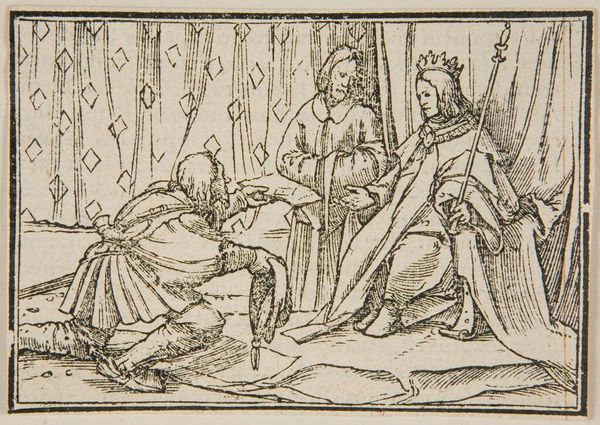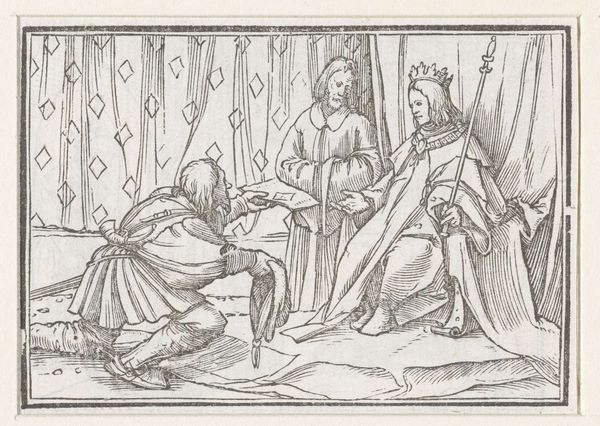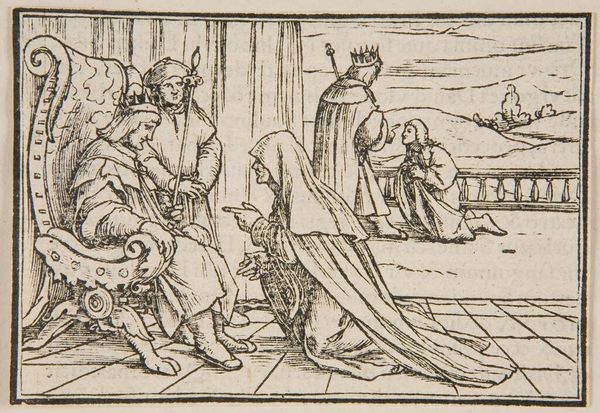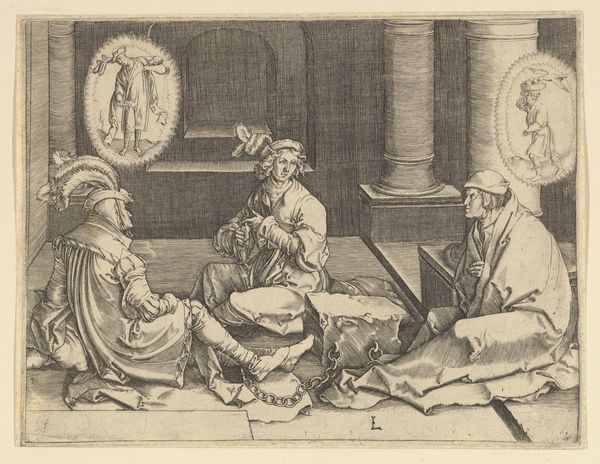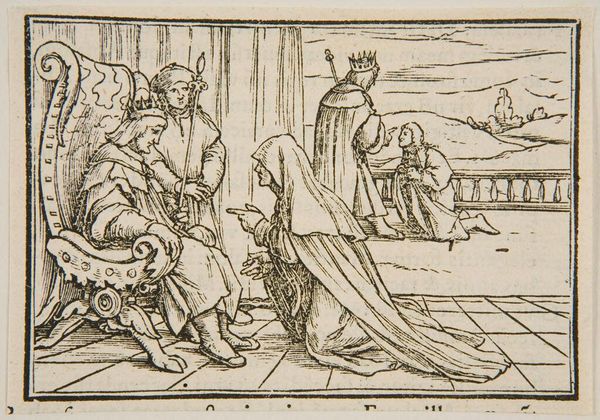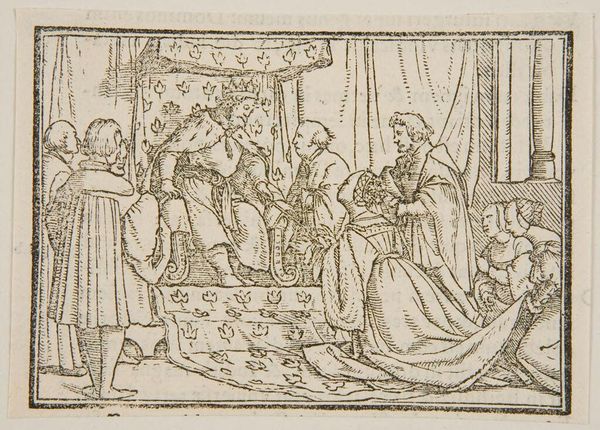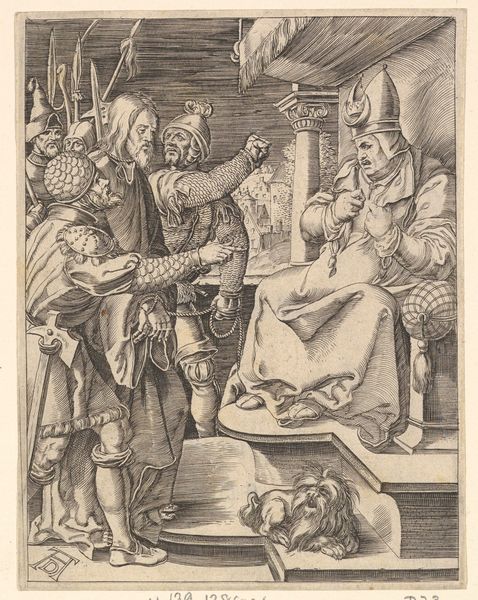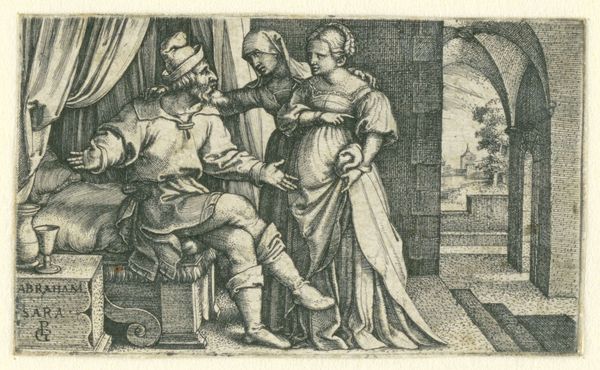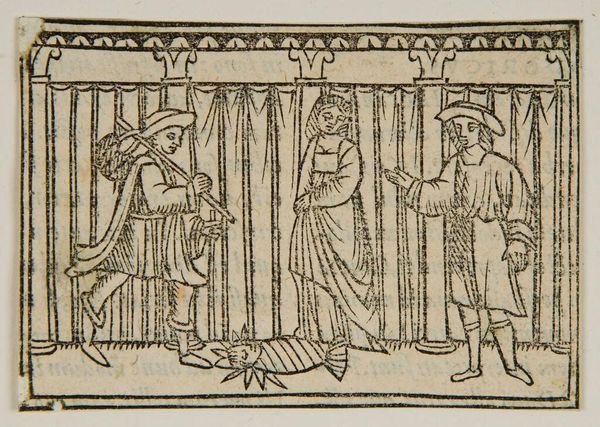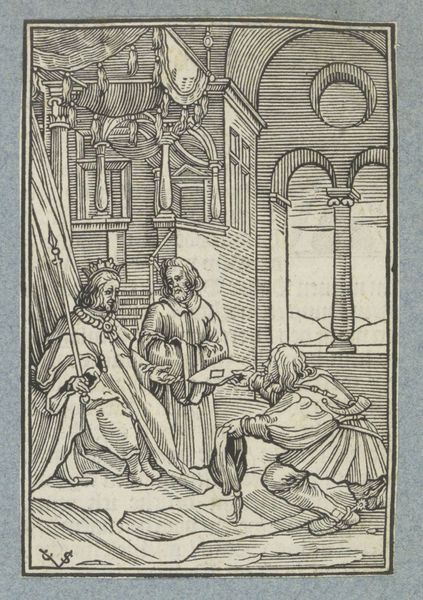
Copyright: CC0 1.0
Curator: Let's discuss Hans Holbein the Younger's "1 Kings I," housed here at the Harvard Art Museums. Editor: It strikes me as a study in power dynamics. The supplicant's posture, the King's upright stance, it's all carefully constructed. Curator: Indeed. Holbein, active in a tumultuous period, used his art to reflect on the sociopolitical structures of his time. This woodcut, likely part of a series, depicts a scene of royal authority. Editor: The austerity of the lines, the stark contrast, speaks to a certain moral rigidity as well, wouldn't you say? Do you think Holbein is making a statement about the divine right of Kings? Curator: Perhaps. Or perhaps he's documenting the performative nature of power, the rituals that reinforce hierarchy. The image offers a lens through which we can consider the nature of power relations. Editor: A potent reminder that art, even in the 16th century, was always engaged in political dialogue. Curator: Exactly. It's a conversation that continues to resonate today, as we grapple with our own systems of power and representation.
Comments
No comments
Be the first to comment and join the conversation on the ultimate creative platform.
